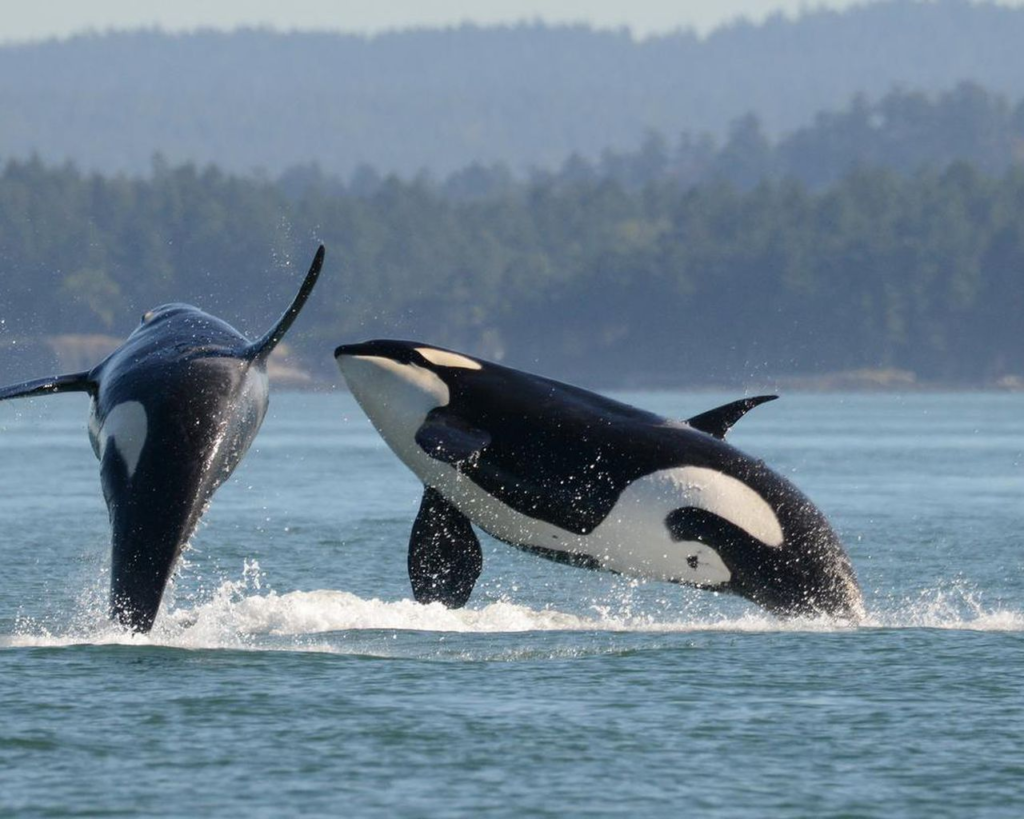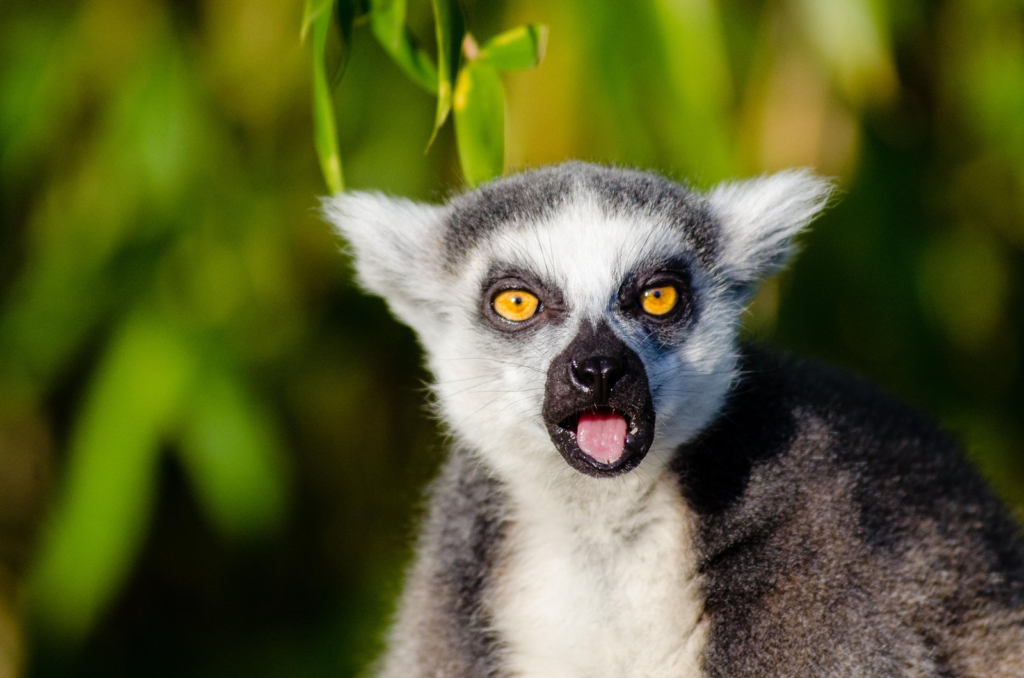Last Updated on December 25, 2023 by Fumipets
Species Ruled By The Boss Ladies
Throughout the animal kingdom, nature’s hierarchy often features remarkable leaders known for their strength, intelligence, and sheer determination. While many may envision these leaders as male, the world of wildlife is home to numerous species where females reign supreme.
From fierce lionesses to cunning matriarchal bees, the queens of the animal kingdom defy gender norms and wield power with grace. In this exploration, we’ll delve into the captivating world of species ruled by the boss ladies, celebrating the remarkable females that shape their communities and ecosystems.
Female dominance are rare in the animal kingdom. Well, it seems that there are species out there that are dominated by females; they primarily do the hunting for the males and even for the entire race.
There are other species, where a matriarchal society rules supremely in terms of leadership, like in a few species of spiders. Other examples of female dominants in the animal kingdom vary from insects to mammals, which we’ll discover in the following section.
1. Topi Antelopes

Topi antelopes are found in Africa. They are known as “bossy females” because they lead the herd. Animals that attempt to join their group are chased away by these animals because they are very territorial.
Predators are usually intimidated by the large horns of the topi antelope. Moreover, they have a specialized mating habit where the males compete with each other to impress the females.
Topi antelope live in the savannah grasslands of East Africa. Males develop huge horns during adolescence, which they use to defend themselves against other males. Females choose the strongest male to mate with.
Studies state that women prefer older males over younger males. This preference is due to the fact that older males have higher levels of testosterone, which makes them stronger and better able to provide protection for the herd.
2. Dwarf Mongoose

Africa’s sub-Saharan region is home to dwarf mongooses. They live in colonies consisting of several females and their offspring. Females are larger than males and they rule over them. Males are smaller and subordinate to females.
Dwarf mongooses belong to the genus Herpestidae. There is a strong social aspect to these animals, as they live in large groups. A dwarf mongoose is a small member of the mongoose family. It lives in South Africa and has a body length between 7 and 11 inches (18–28 cm). Longer tails than heads and bodies are characteristic of this animal.
Dwarf mongoose has a very distinct diet. They love to eat insects as their main meal. They also eat ants occasionally. You will be surprised to know there are no king ants. Ants colonies are led by their queen ant.
3. Praying Mantis

Praying mantises are insects that have long bodies and two pairs of wings. Their habitats include tropical areas in southern Europe, North America, and southern Africa. Their appearance makes them look like they are praying or meditating.
They are also known as the “prayer insects” because their posture resembles a person who is praying. Additionally, they are regarded as symbols of good fortune.
In nature, the male praying mantis has no power over the female. Her mating with him cannot be forced. When it comes to mating, she makes her own choices. If he tries to force himself upon her, she will bite off his head.
They are usually found in warm climates with high humidity. Beetles, crickets, grasshoppers, cockroaches, and beetles make up the bulk of their diet.
4. Orcas

Orca whales are known for their intelligence, social structure, and complex communication systems. They live in pods of related individuals called clans. Each clan has a matriarchal leader who rules over its group.
Orcas are highly intelligent animals. Their communication consists of clicking, whistling, and other sounds. They also have sophisticated social structures. This means they are very smart and capable of learning from each other.
Female orcas are known to be very aggressive towards other orcas. Females who try to mate with their males are often the targets of this aggression. In addition, the females will also attack any male orcas who attempt to mate with their females, even when there is no threat of violence.
5. Clownfish

Clownfish is one of the most well-known and beloved fish in the ocean. The bright colors and patterns of these creatures make them easy to identify. Clownfish are found in warm tropical waters all over the world.
The clownfish and sea anemones have a symbiotic relationship. Clownfish clean the anemone and bring food to the anemone while the anemone protects them from predators.
Clownfish are ruled by their female Clownfish. The biggest and most aggressive clownfish is the female. She is the only one who can mate with the male. If the dominant female dies, the male clownfish will turn into a female.
Clownfish are known for being very social animals. A group of these animals is called a shoal. These shoals usually consist of between 50 and 200 individuals. Each individual has their own territory or home range. They are often found in coral reefs and tropical waters.
6. Spotted Hyena

Species of hyenas native to the African savanna are spotted hyenas. They live in groups called clans, where females rule over males. There is a larger body size difference between males and females, as well as a larger head, longer legs, and stronger jaws in females. Males are smaller, and their faces are rounder.
In addition to forming long-term relationships with their clanmates, hyenas are highly social animals. This means that hyenas are usually monogamous. In addition to being territorial, hyenas are highly aggressive towards each other. They fight using their teeth and claws, and sometimes even bite off each other’s tails.
The clan leader is usually the alpha male who has control over other males. Females are also important because they are responsible for raising cubs. They are also better at hunting and defending their territory. This means that females are often able to dominate the social hierarchy within a clan.
However, some females are less dominant than others. Female submissives are often treated poorly and seen as inferior by the group as a whole. In order to survive, these females try to get along with the dominant females.
Among the largest carnivores in Africa, this one is a large predator. The males are solitary creatures. They are also known as striped hyenas because of their spotted fur. Their diet consists mainly of insects, small mammals, birds, eggs, and carrion.
7. Bonobos

What makes a bonobo society so unique? Firstly, female bonobos rule the social order. That’s right – in bonobo society, it’s the ladies who call the shots.
In what way does this impact bonobos? Well, for one thing, it means that bonobos tend to be more peaceful and egalitarian than other species of apes. Female bonobos also play a very important role in raising the young, teaching them the skills they need to survive in the wild.
All in all, bonobos are an amazing species, and their female-led society is just one of the many things that makes them so special.
Animals have a variety of social structures. Among the most interesting is the female-led society of bonobos. In a bonobo group, the females dominate the males. This is most clearly seen in their mating behavior. While in many animal species, the males compete for the attention of the females, in bonobos it is the females who choose their mates.
It is not clear why females have taken on this role in bonobo society. One theory is that it gives them more control over reproduction. By being able to choose their mates, they can ensure that their offspring are fathered by the strongest, healthiest males. By doing this, they increase the chances of their offspring surviving.
There are a variety of explanations for why bonobos are such fascinating animals in terms of their social behavior. These primates live in groups called troops. Females usually lead the troop while males follow behind. Males will fight other males for dominance.
Female bonobos are the ruling class of bonobos. They are the ones who make the decisions and lead the way. While the males are not completely powerless, they also protect their clans and help female bonobos defend against other predators.
8. Lemurs

Lemurs are a fascinating species of animal, and their social structure is one of the most interesting things about them. Lemurs are ruled by their female Lemurs and this is something that sets them apart from other species of animals.
Lemurs are very social creatures, and they have a great deal of respect for their female leaders. This is something that you don’t see very often in the animal kingdom, and it’s one of the things that makes Lemurs so special.
Conclusion
Female species are often seen as being bossy or controlling, but they also play a vital role in nature. They are responsible for raising their young and protecting them from danger.
There are a number of animal species that fit the definition of matriarchy in the animal kingdom. Matriarchies are social organizations in which women hold primary power positions.
There are several other animal species that live in communities with female domination, and this article covered some of them. Do you love animals? If so, you might want to check out some common myths about dogs.
Questions and Answers on Matriarchal Societies in the Animal Kingdom
Which species are known for matriarchal societies, and why is this arrangement significant?
Several species, including elephants, hyenas, and killer whales, exhibit matriarchal societies where females hold dominant roles. This arrangement is significant as it challenges traditional gender roles and demonstrates the vital leadership roles females play in these communities.
What role do lionesses play in a pride’s social structure, and how do they contribute to their pride’s survival?
Lionesses are the primary hunters in a pride, responsible for providing food for the group. Their exceptional teamwork, strategy, and hunting skills ensure the survival of the entire pride.
How do honeybee colonies function under the rule of a queen bee, and what makes her a pivotal figure in the hive?
In honeybee colonies, the queen bee is the sole fertile female and the mother of all the bees. She lays eggs, dictating the hive’s population, and her pheromones maintain social cohesion among the workers and drones.
What makes female orca whales exceptional leaders in their pods, and how do they contribute to the pod’s success?
Female orcas, particularly elder females known as “grandmothers,” lead their pods in search of food, teach hunting techniques, and pass down cultural knowledge. Their wisdom and experience are vital for the pod’s survival.
How do female elephants, as matriarchs, guide their herds and contribute to their overall well-being?
Female elephants, or matriarchs, make crucial decisions regarding food sources, water locations, and safety. They use their extensive memory and social skills to navigate their herds through challenging environments, ensuring their survival.


















